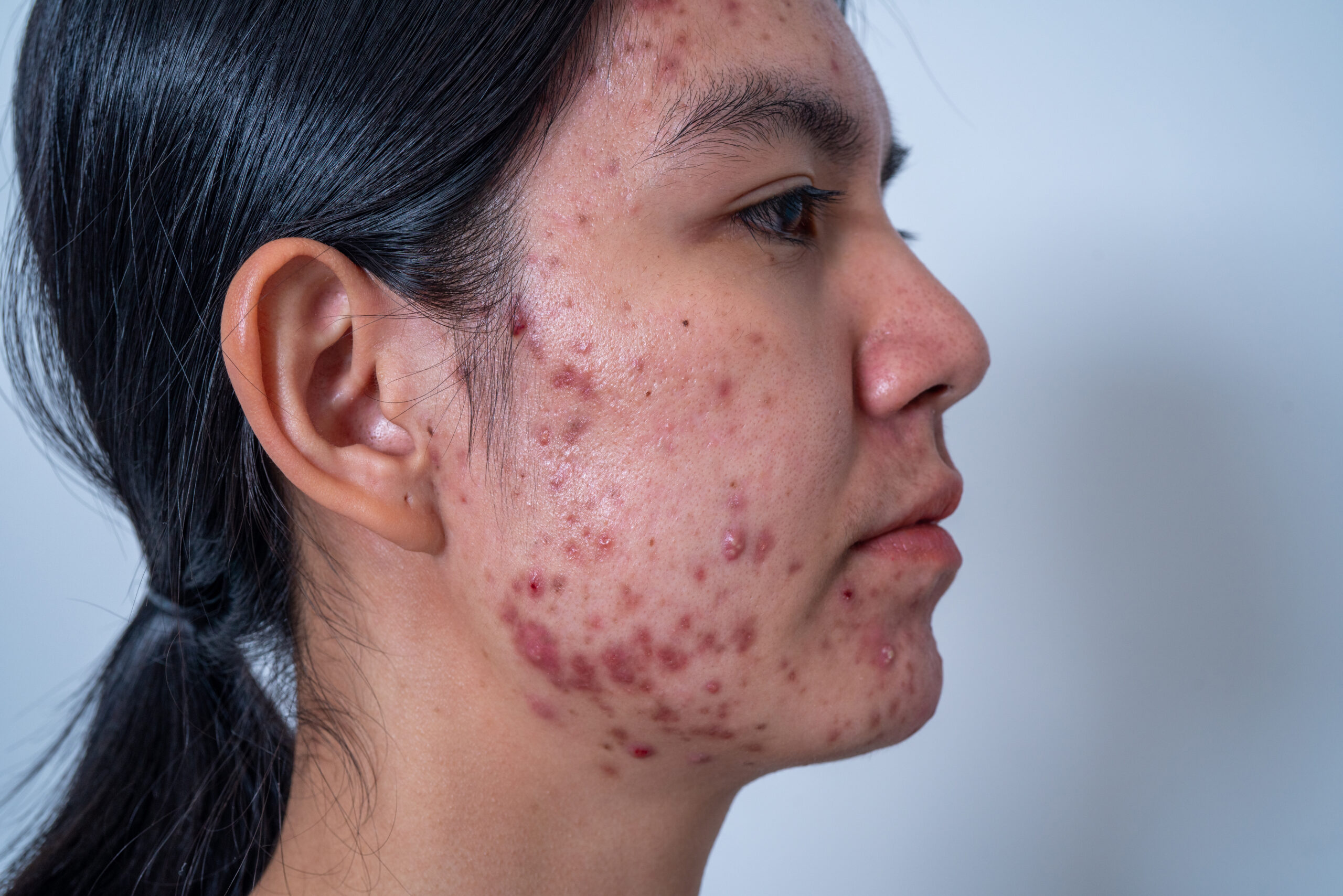Ever battled with acne vulgaris, more popularly known as acne? If so, you’re not alone. It’s a common skin condition that plagues many. However, there’s a new player in town that’s showing promising results – photodynamic therapy (PDT).
This innovative approach to treating stubborn inflammatory acne vulgaris is taking the skincare world by storm. But what exactly is PDT and how does it work? In this post, we’re going to get into the intricacies of PDT and how it could be a game-changer for those dealing with acne vulgaris lesions. Whether you’re a skincare enthusiast or someone seeking effective solutions for acne, this exploration of PDT is sure to pique your interest. So, let’s dive in!
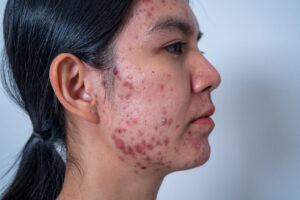
Understanding Acne Vulgaris: A Primer
Diving deeper into the treatment of acne vulgaris, photodynamic therapy acne (PDT) has emerged as a revolutionary method. It has shown significant success in managing this persistent skin condition. PDT operates by applying a photosensitizing agent to the skin, followed by exposure to a light source. This process triggers a reaction that destroys the acne-causing bacteria and reduces inflammation.
Benefits of PDT
The benefits of PDT extend beyond just acne treatment. It also aids in the reduction of excessive oil production and the size of pores, providing a comprehensive solution for acne sufferers. Furthermore, PDT has proven to be highly effective for inflammatory acne vulgaris, which is often resistant to traditional therapies.
 For those who have struggled with acne vulgaris lesions, the introduction of PDT could be the turning point in their skincare journey. It’s a scientifically-backed, cutting-edge treatment that is reshaping the face of acne management. It’s worth mentioning that like any other treatment, PDT may have potential side effects, therefore, it is important to consult with a dermatologist before beginning the therapy.
For those who have struggled with acne vulgaris lesions, the introduction of PDT could be the turning point in their skincare journey. It’s a scientifically-backed, cutting-edge treatment that is reshaping the face of acne management. It’s worth mentioning that like any other treatment, PDT may have potential side effects, therefore, it is important to consult with a dermatologist before beginning the therapy.
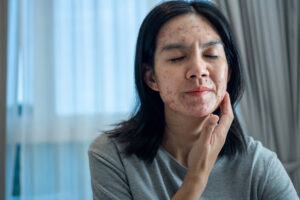
The Science Behind Photodynamic Therapy (PDT)
Exploring the scientific mechanisms of photodynamic therapy (PDT) acne treatment reveals a fascinating process, involving the interaction of light, oxygen, and photosensitizing agents.
This innovative approach primarily targets the Propionibacterium acnes bacteria and the sebaceous glands, which are key culprits in the development of acne vulgaris. Upon application of the photosensitizing agent, a specific wavelength of light is used to activate the agent, which then produces a form of oxygen that kills the bacteria.
What Makes PDT a Notable Development Against Acne?
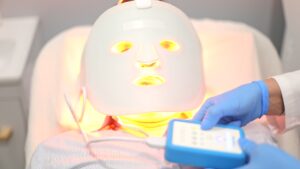
PDT is incredibly valuable because of its selective targeting. Unlike other treatments, it doesn’t indiscriminately affect all cells, but rather zeroes in on the acne-causing bacteria and sebaceous glands. This selective damage spurs the body’s natural healing process, leading to the reduction of inflammatory acne and potentially minimizing acne scarring.
Another essential aspect of PDT is its role in reducing sebum production. Overactive sebaceous glands contribute to acne vulgaris lesions, and by targeting these glands, PDT can help manage oil production, leading to long-term improvement in the skin’s texture and appearance.
It’s important to note that while PDT shows promising results, it’s not a one-size-fits-all solution. Patient-specific factors, such as skin type and severity of acne, should be considered. Nevertheless, the science behind PDT’s effectiveness is undeniable, offering a beacon of hope for those dealing with stubborn inflammatory acne vulgaris.
5 Key Advantages of Photodynamic Therapy for Acne
Utilizing photodynamic therapy for acne gives a clearer picture of why it has become a go-to treatment. The first and foremost benefit is a notable reduction in the inflammation associated with acne vulgaris. This is due to PDT’s ability to target and kill acne-causing bacteria, thereby alleviating the symptoms of inflammatory acne vulgaris.
Secondly, there is a marked decrease in oil production. Photodynamic therapy treatments have the capacity to regulate overactive sebaceous glands, which are a significant contributor to acne. Thus, the therapy can help balance the skin’s oil production, improving texture and reducing shine.
Thirdly, the PDT treatment has minimal side effects compared to more aggressive treatments. While mild redness or peeling can occur, these effects are temporary and usually subside within a few days.
Fourthly, PDT treatments can be customized to fit the patient’s specific needs. Factors such as the severity of the acne vulgaris lesions, skin type, and response to treatment are all considered when tailoring the therapy.
Lastly, the versatility of PDT cannot be overstated. Beyond inflammatory acne, it has proven effective in the treatment of other skin conditions, making it a multipurpose tool in the field of dermatology. Its versatility combined with its effectiveness explains why it’s a favored option in the ongoing battle against acne.
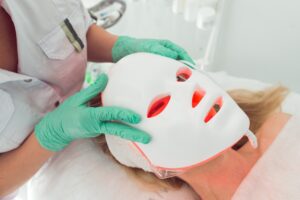 Unpacking the PDT Treatment Process: What to Expect
Unpacking the PDT Treatment Process: What to Expect
Let’s have an insightful look at what happens during a photodynamic therapy acne treatment. Patients prepare by cleaning their skin thoroughly, which is then treated with a photosensitizing agent. This agent is left on the skin for a duration of anywhere between 15 minutes to 3 hours, depending on the severity of the acne.
During the next step, the skin is exposed to a light source which activates the photosensitizing agent. This causes a reaction that destroys acne-causing bacteria and shrinks the sebaceous glands, reducing oil production. The procedure typically takes about 15-20 minutes, after which a sunscreen is applied to protect the treated skin.
Potential Side Effects
In the aftermath of the therapy, patients may experience some sensitivity, redness, and peeling of the skin. These side effects, however, are temporary and often resolve within a week.
The number of treatments required varies from patient to patient, but generally, a series of 2-3 treatments spaced 4-6 weeks apart can lead to significant improvement in the condition of your skin.
In a nutshell, the journey through PDT therapy is straightforward, with few side effects and the potential for highly successful results. It is a solid option for those battling with acne vulgaris and seeking an effective solution.
Follow-Up and Long-Term Care: Post PDT Treatment
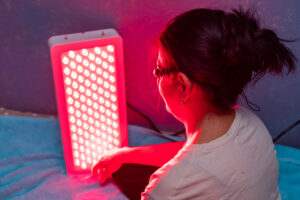
As you continue your path to clear skin post photodynamic therapy acne treatment, meticulous aftercare and long-haul management become paramount. In the days following PDT treatment, sensitivity and redness are to be anticipated and are usually short-lived, resolving within a week.
Peeling is another anticipated aftermath of therapy, akin to a sunburn peel. This is a normal part of the healing process as the skin rejuvenates itself.
Your skincare regimen will require a tweak. Sun protection is absolutely crucial as your skin will be photosensitive post therapy. A broad-spectrum sunscreen, with an SPF of at least 30, should become your constant companion.
Maintaining hydration of your skin will aid in the healing process. A gentle, non-comedogenic moisturizer can help soothe and nourish your skin without clogging your pores, thereby preventing any potential acne flare-ups.
Realistic Expectations
The road to clear skin post photodynamic therapy does not end immediately after the treatment. It might necessitate multiple sessions, typically 2-3, spaced 4-6 weeks apart. This is to ensure the best possible outcome in combating inflammatory acne vulgaris.
Your dermatologist will provide you with an individualized treatment plan, tailored to your specific needs. Regular follow-ups will help assess the progress and make any necessary adjustments to your treatment regimen.
In essence, your dedication to follow-up care and long-term management is the key to maintaining the benefits of your photodynamic therapy acne treatment.

Conclusion
Photodynamic Therapy treatments (PDT) are a promising solution to the pervasive problem of acne vulgaris. By harnessing the power of light to combat inflammation and destroy acne-causing bacteria, PDT offers a unique approach to skin health. It’s not a magic bullet, but for many, it represents a viable alternative to traditional acne treatments.
The process of PDT might seem daunting, but the potential benefits are worth the effort. From reduced inflammation to the elimination of bacteria, the advantages of PDT are numerous. However, it’s important to understand that PDT, like any medical treatment, carries potential side effects. Long-term care post-PDT treatment is crucial in maintaining results and preventing potential complications.
In conclusion, whether you’re battling persistent acne vulgaris or seeking a different approach to skincare, PDT offers a scientifically-backed solution worth considering. It’s a testament to the ever-evolving field of dermatology, offering new hope to those seeking clearer, healthier skin. Remember, knowledge is power – understanding the ins and outs of treatments like PDT empowers you to make informed decisions about your skin health.
Tired of Dealing With Severe Acne? Get In Touch!
Are you tired of battling stubborn skin issues? Transform your skin with Photodynamic Therapy (PDT) at Jeunex Clinic. Our state-of-the-art treatment targets acne, sun damage, and signs of aging, leaving your skin radiant and rejuvenated.
At Jeunex Clinic, we combine advanced technology with expert care to deliver results that not only look incredible but also feel fantastic. Experience the confidence of clear, glowing skin and say goodbye to imperfections.
Don’t let skin problems hold you back any longer. Book your PDT treatment at jeunex.ch@gmail.com today and embrace a future of flawless, youthful skin. Your transformation starts now!

